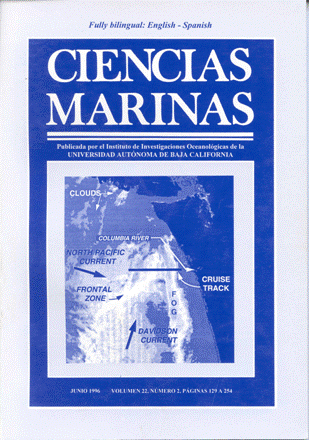The edge effect in the Northeast North Pacific Ocean
Main Article Content
Abstract
During April 1989, an intensive, short-term study of oceanic zooplankton tested the hypothesis that multidimensional distribution (patchiness, diffusion, layering) reflects the water mass interaction in the Northeast North Pacific Ocean (NENPO) during the spring season. The mixing water masses created an edge effect to which the biota responded. A dual frequency sonar array (38 kHz, 200 kHz), towing in tandem with an oceanographic sensor system, recorded zooplankton and environmental changes across various water masses. The tandem sensor system was a method to synoptically map the NENPO at the beginning of the productive period of early spring over an area of 3.3 × 105 km, 125 m in depth. Results from the plankton data showed patchiness and layers conforming to oceanographic physical features. These patterns appeared to define the interactions of the water masses and confirm the hypothesis.
Downloads
Article Details
This is an open access article distributed under a Creative Commons Attribution 4.0 License, which allows you to share and adapt the work, as long as you give appropriate credit to the original author(s) and the source, provide a link to the Creative Commons license, and indicate if changes were made. Figures, tables and other elements in the article are included in the article’s CC BY 4.0 license, unless otherwise indicated. The journal title is protected by copyrights and not subject to this license. Full license deed can be viewed here.

